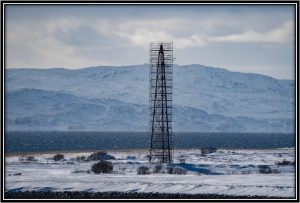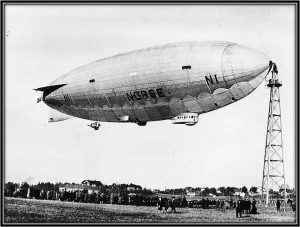Aviation History: Luftskipsmasta (Airship Tower)
Contributor: Barry Fetzer
Sources: Atlas Obscura, Shadow of Norge
There’s just something about balloons that make us happy. Airships too! Lighter than air is a joyful thing, and a thing I’d bet we’d all like to be from time-to-time, floating lazily above the earth. I know I would.
Simone Biles, the star of the America’s Lady’s Olympic Gymnastics Team has a sense of what floating is like, her seeming lighter-than-air feats of gymnastic skills being just amazing and even anti-gravity-like.
Alas, given gravity and too many pounds added as I’ve aged (and never having been blessed with the physical skills of our lady Olympians anyway), I’ll never feel that joy that Simone feels suspended in space, unshackled to earth like the rest of us mere mortals. But famous polar explorer Roald Amundsen also had a chance to experience lighter than air in 1926, through riding on what amounted to a big balloon.
According to the website Atlas Obscura, “In 1926, Norwegian explorer Roald Amundsen flew his airship Norge over the North Pole, making him and his crew the first people to fly over the northernmost point on the planet.

Airship-Tower- Vadsøya (under renovation with scaffolding). Norwegian explorer Roald Amundsen docked his airship here before leading the first-ever flight over the North Pole. Photo by Ben Diamond (Atlas Obscura User)
“On the way, Amundsen had to dock the airship at several mooring towers for refueling. One of those towers still stands on Vadsøya, the island just off the coast of Vadsø in the extreme northeast of Norway. The Varanger peninsula is a remote and beautiful place and you can only wonder at the sight of this huge airship arriving there in 1926.”
According to the website Shadowofnorge, “To allow the stopover in various intermediate places on the route of the Pole, where there were no airship bases, a series of modular “mooring masts” were built which were arranged in the planned stopping points where hangars and other facilities were not available for normal protection. The masts had the characteristic of having a rotating top socket, which would have allowed the NORGE to remain hooked to the ground, always rotating with the bow in the direction of the wind, like a giant weather vane. The masts were also equipped to allow the refueling of hydrogen and petrol for the airship as well as, albeit uncomfortably, for the crew to get on and off. The solution of ‘hooking the airship by the nose thirty meters above the ground’ was precarious and uncomfortable but proved to be extraordinarily effective and reliable.”

Airship Norge moored at a mast. Photo courtesy of www.shadowofnorge.eu.
Sources: https://www.shadowofnorge.eu/en/in-history/the-1926-expedition/ and Atlas Obscura https://www.atlasobscura.com/
Onward and upward!







